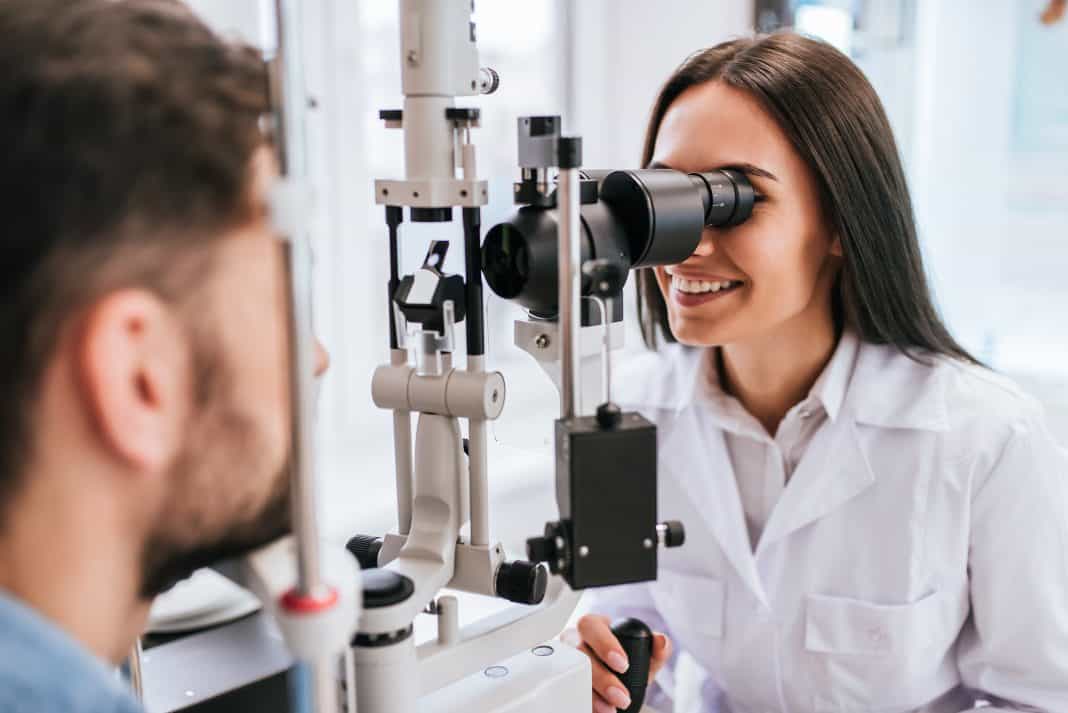In the April issue of Retail Pharmacy Assistants e-magazine, we put on strong lenses to view the problem of glaucoma, looking at how pharmacies can help everyday people manage their eye care.
Glaucoma is the name given to a group of eye diseases where vision is lost due to damage to the optic nerve.¹
There is no cure and vision loss is irreversible, which, says Glaucoma Australia CEO Annie Gibbins, accentuates the need for more healthcare professionals, in positions that are easy to access for patients, to be knowledgeable and assist in every way possible with the management of this condition.
“Pharmacists have a significant role in the care of patients living with glaucoma,” said advanced practice pharmacist Debbie Rigby, a member of Glaucoma Australia’s Clinical Advisory Committee.
“They can raise awareness and understanding of the disease, help identify those at risk, encourage regular eye checks, and educate patients about the medications used to treat glaucoma. Adherence to therapy and correct instillation of eye drops influence patient outcomes and quality of life.
“Major risk factors for glaucoma are a strong family history of glaucoma, ethnicity (African or Asian descent), older age and myopia.”
Early detection is key
While no cure yet exists for glaucoma, most people are able to manage their condition successfully with the use of eye drops, laser treatment, surgery or a combination of these.¹
Crucial in the treatment process is detecting glaucoma early.
“Pharmacists have a role in identifying people at the greatest risk of developing glaucoma, such as [those with a] family history of glaucoma,” Ms Rigby said.
“Early-detection personalised risk calculation could improve health outcomes of people at risk of developing glaucoma. Glaucoma-associated vision loss impairs quality of life and affects a person’s ability to perform daily activities such as reading, walking and driving, so it’s important pharmacists take some responsibility for early detecting and ongoing care.”
Identifying glaucoma
Because pharmacists can play a crucial role in the early detection of glaucoma, an important aspect is being able to identify symptoms that are glaucoma related. However, as so many people don’t realise they have glaucoma, which is mostly asymptomatic until late in the disease, this can be difficult.
“As the disease progresses, people may mention the loss of peripheral vision and should be referred to their optometrist or GP,” Ms Rigby said.
She says patients presenting with the following symptoms need immediate review, as a medical emergency could be indicated:
- Severe eye pain with nausea and vomiting, headache, or watery eyes.
- Sudden onset of blurred vision.
- Seeing halos around light.
Extra measures to optimise eye care
To avoid
“People with glaucoma should not be concerned about the vast majority of activities, and should generally continue to do the things they love,” Ms Gibbins said.
However, she adds that those with more advanced glaucoma should consider limiting:
- Specific (head down) yoga positions. “Especially those with the head below or at level with the heart, [as this] can be associated with increased IOP. Yoga practitioners with glaucoma can continue their yoga, but it’s best to avoid head-down positions.”
- The playing of some wind instruments – for example, bagpipes, trumpet, and trombone – is “associated with increasing pressure around the face and upper airways. This causes raised IOP and can be harmful in glaucoma”.
- Wearing swimming goggles. These have been “shown to increase IOP while they’re on. Smaller goggles that sink inside the eye socket are of most concern. Larger snorkelling-type goggles are safer with less impact on eye pressure and should be worn in preference to smaller ones”.
“If you wear closed collars (with ties for example), be careful not to have them too tight as this increases pressure in the veins of your head and neck and thus increases eye pressure too,” Ms Gibbins said.
To consider
Based on research into measures that can assist in healthy eye care, Ms Gibbins points to antioxidants and nitrates that “may reduce glaucoma risk and are found in fruit and vegetables”.
“It’s best to eat plenty of fruit and vegetables, especially those rich in vitamin A and C, carotenes, and nitrates.,” she said
“Omega-3 fatty acids, found in oily fish – for example, salmon – and chia have been shown to lower rates of glaucoma.
“Dark chocolate also contains flavonoids and has been proven to be beneficial in patients with vascular and cardiovascular diseases, [although] further research is required to see whether there’s any benefit for glaucoma patients.”
References
- Glaucoma Australia, 2022. ‘What is glaucoma?’
- Bright Focus Foundation, 2021. ‘Five common myths about glaucoma’






